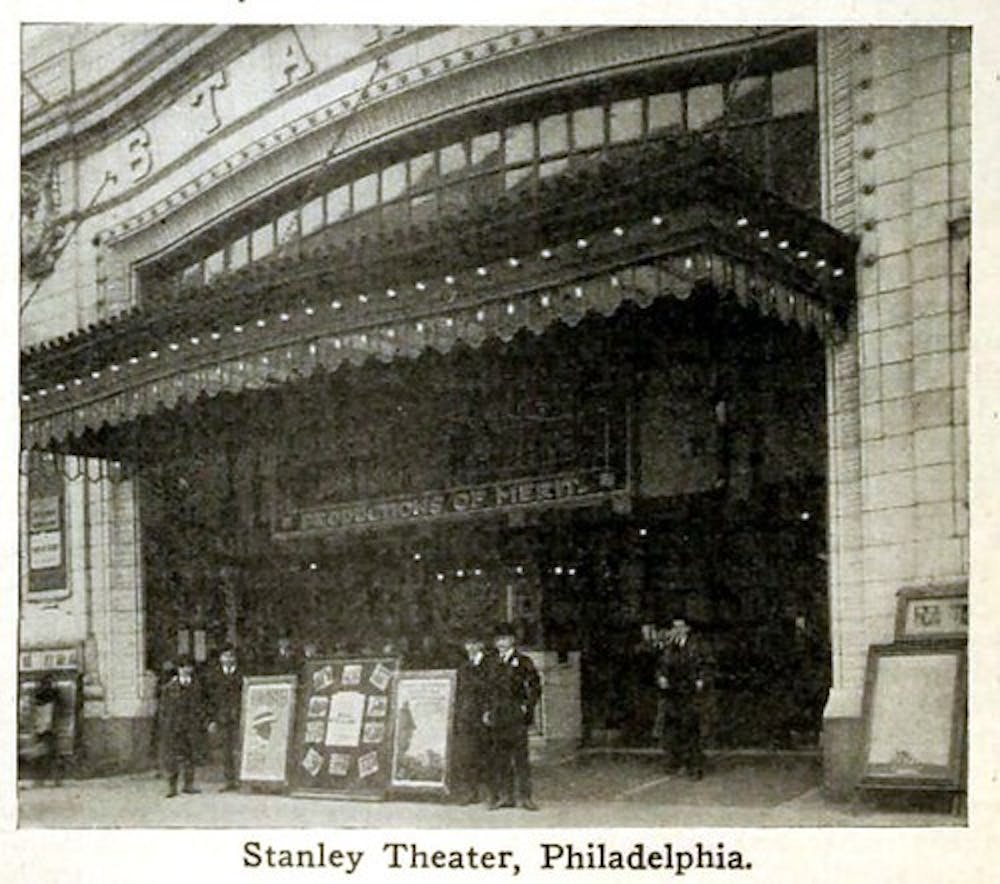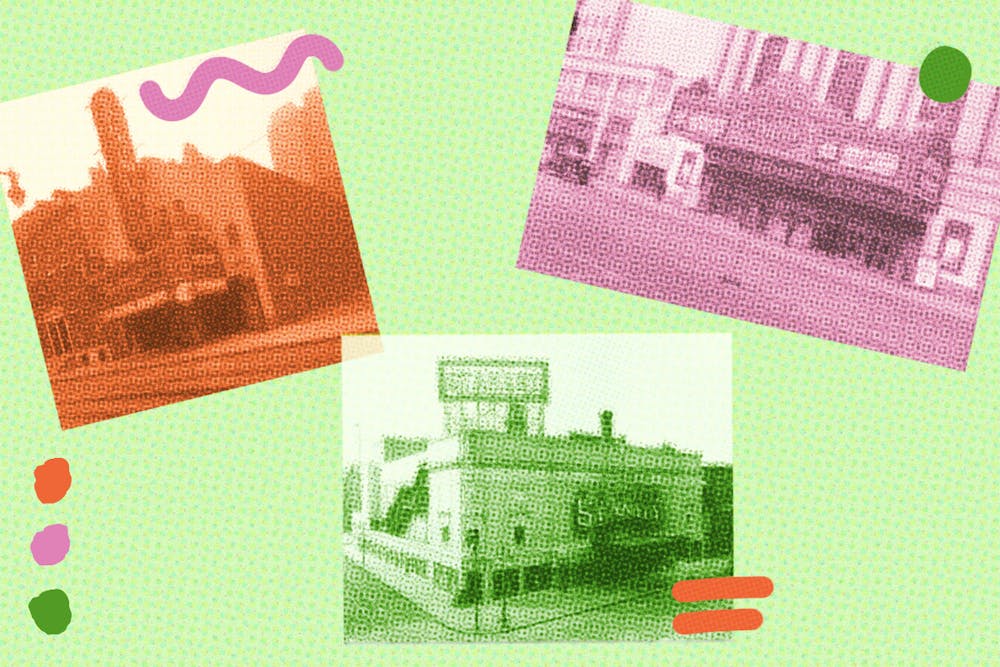With the COVID–19 pandemic exacerbating difficulties faced by the movie theater industry, conversations about the death of the movie theater experience have come to the forefront. But for many, movie theaters as they knew them died a long time ago.
Many of the historic movie theaters in Philadelphia have been lost to time, technological advancement, and evolving entertainment trends, despite a universal love for these extravagant locations. In tribute to what made theaters what they are today, here’s a look at the ghosts of Philadelphia’s movie theater scene.
Stanley/Stanton/Milgram Theatre
More recently the Milgram Theatre, Stanton Theatre was not this theater’s only name, but it was the one it held the longest. Opened in 1914, it had a steep auditorium combated by what advertisements called "Philadelphia's Only Theatre Escalator," and boasted a full orchestra during the silent film era. A popular venue for action films, low–budget westerns, horror films, and double features, it had a B–movie policy, showing cheesy, cliché movies made quickly and cheaply. In 1958, it strayed from this approach, beginning to screen Oscar–winning and critically acclaimed films such as The Defiant Ones. Throughout its 66–year lifespan, the theater saw many big names venture into its doors, such as Bob Mathias, Jesse Owens, and James Darren, to name a few.
After it closed in 1980, the theatre's slice of Market Street became the PNC Bank Building, culminating in the loss of a guilty pleasure for many who reveled in the comfort of low–budget films.

"Stanley Theatre, 1620 Market Street, Philadelphia, Pennsylvania in 1916 - MPW July" by CharmaineZoe's Marvelous Melange is marked with CC BY 2.0.
Mastbaum Theatre
Demolished in 1958, the Mastbaum Theatre was Philadelphia’s largest and most impressive cinematic feat despite its short–lived career. Not only was it grand within the confines of Center City, but its 4,717 seat auditorium made it one of the greatest in the United States. With marble, murals, glass windows, and gold leaf, it had a striking interior that contributed to its exorbitant price: It cost $5.5 million to create. Unfortunately, the theater's extravagance might have undermined its purpose; built in the early 1920s, it became too expensive to run even though it put Philadelphia on the movie theater map.
Now Commerce Square, a trophy–office complex, the theater faced a multitude of financial difficulties due to its size during its 30–year tenure. Despite its relative success, it was closed for far longer than it was open due to operating expenses. On the heels of the Great Depression and the dawn of television, it couldn't survive.

"Mastbaum Theatre, Philadelphia, PA in 1929 - Organ Loft & Proscenium wall" by CharmaineZoe's Marvelous Melange is marked with CC BY 2.0.
Boyd Theater
Center City lost a loud, vibrant staple of its movie theater history when the Boyd Theater was dismantled in 2015 despite popular support for its preservation. Built in the 1920s, it was constructed during an intoxicating era of growth and social change—that it survived for over 80 years is all the more impressive. A simple yet ornate design that featured Art Deco style motifs and glass mirrors, Philadelphia’s last Art Deco movie palace offered a sense of wonder and magic to its moviegoers. The 2,450 seat auditorium and extravagant lobby were a distant dream come to life.
In 2015, a 13–year–long effort that banded a community together to fight its demolition was struck down. Downtown Philadelphia lost what remained of its historic movie palaces, defaulting decades of laughter and tears to memory. Its current owners, Pearl Properties, replaced it with a 24–story residential tower, The Harper. While the company preserved its iconic lobby, it will remain a regretful reminder of a once–glorious experience lost to time and the changing entertainment industry.

"Boyd Theatre, Philadelphia, PA in 1929 - Proscenium and Stage" by CharmaineZoe's Marvelous Melange is marked with CC BY 2.0.
As panic grows over the state of the movie theater industry today, it’s important to remember that entertainment and how we consume it has always been something that evolves. While the end of things we’ve come to consider essential to the human experience is an unfortunate reminder that nothing is permanent, perhaps the end isn't as life–changing as we expect it to be. While small, artier titles have struggled for years now, action–packed comic book movies continue to have mass appeal with movie theater audiences. Similarly, movie theaters are an essential part of our social lives and have been for the last century; this is unlikely to change regardless of what these theaters show. No matter what the future holds, we should appreciate what we have before it becomes a distant memory.

